New Year’s Traditions Around the World
As 2017 comes to an end and 2018 is just around the corner, you may be thinking about how you can make the new year your best year yet.
That’s why we’ve done the research on some common New Year’s food traditions from around the world that are thought to bring good luck, health, and prosperity.
Spain and Mexico
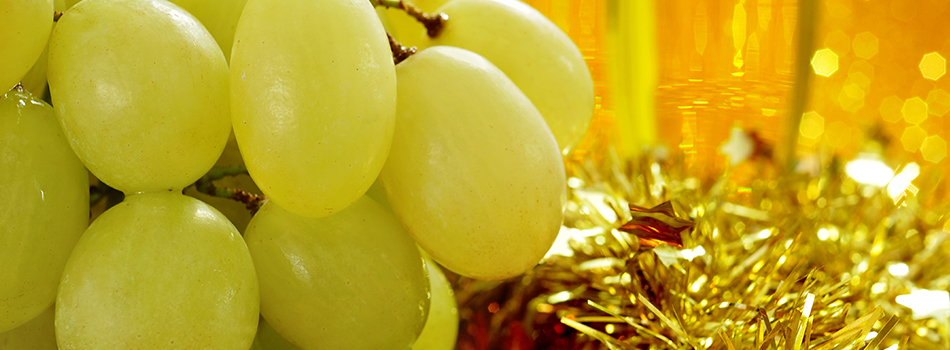
We’ve listed Spain and Mexico together, as they have very similar traditions involving grapes.
Spain’s tradition of “Las Doce Uvas De La Suerte,” or “The Twelve Grapes of Luck,” dates back to 1895. At midnight on New Year’s Eve, it is customary to eat a grape with each bell strike of the Puerta del Sol tower clock.
Similarly, Mexico’s tradition involves eating 12 grapes at midnight. However, each grape symbolizes a month of the upcoming year. For example, if the third grape you eat is sweet, that means you will have a good month of March. If the seventh grape you eat is sour, July will not be a good month for you.
Visiting Spain or Mexico? Make sure to use this greeting on January 1st: a ¡Feliz año nuevo!
Greece
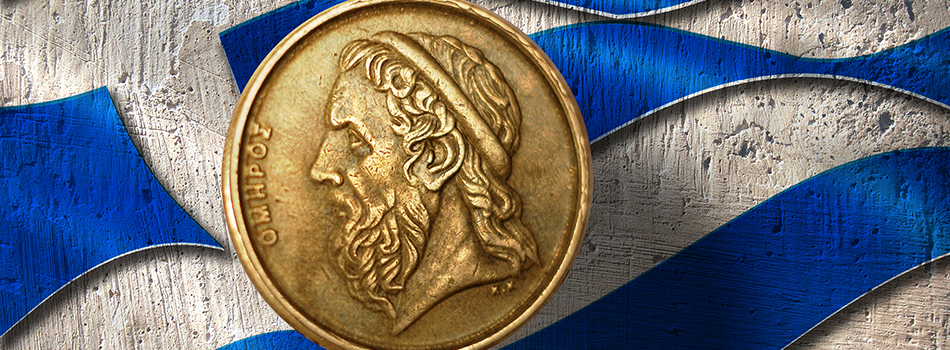
Greece celebrates the new year with New Year’s Day bread or cake that contains a hidden coin or trinket, giving good luck to the recipient. Whoever finds the coin is supposed to have good luck for the year! The sweets are often called Vasilopita, meaning “king pie.” The cake is sliced for each member of the family, by order of age from oldest to youngest.
Visiting Greece? Make sure to use this greeting on January 1st: Καλή Χρονιά!
Ireland
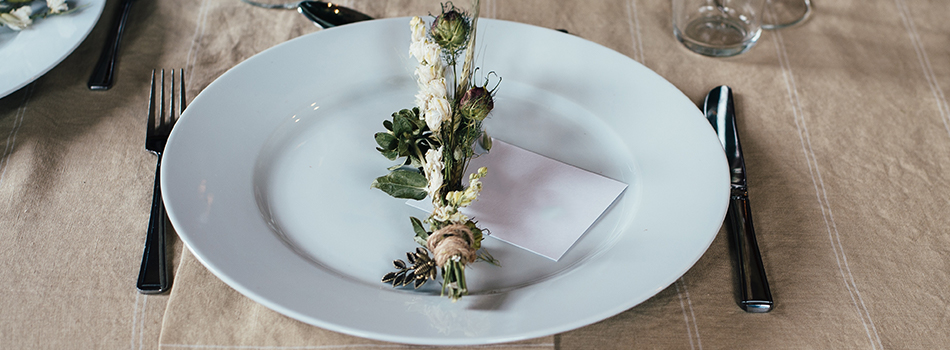
While technically not a food tradition, Irish families will often set a place setting at the dinner table for loved ones who have passed away on New Year’s night. This is a way of remembering family members and honoring them with a place at the table. Sometimes, the door is also left unlocked to symbolize that their loved ones’ spirits can return to the home.
Visiting Ireland? Make sure to use this greeting on January 1st: Happy New Year! (Or Athbhliain faoi mhaise dhuit if you’re speaking Irish Gaelic!)
Denmark
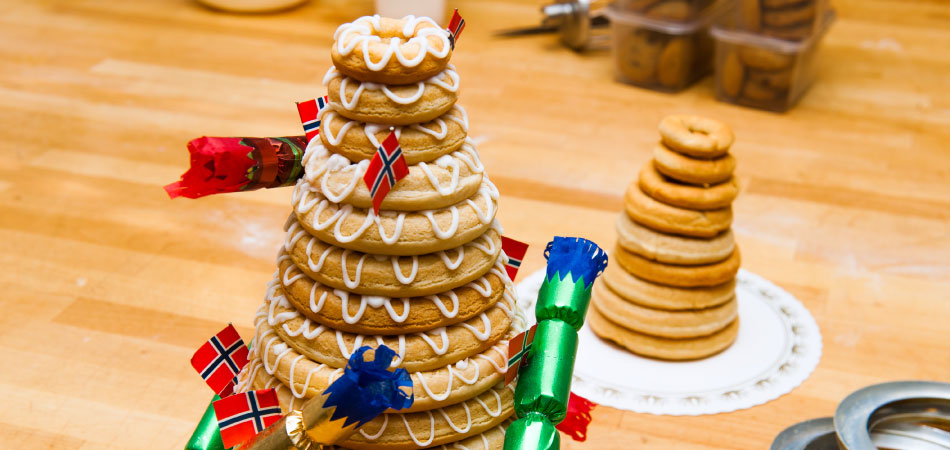
A common festive Danish cake, called the Kransekage meaning “wreath cake,” is eaten on New Year’s Eve. This cake is used for many celebrations, including weddings. It is a series of concentric rings of cake which are layered on top of one another to form a cone. They’re made from marzipan and stuck together using white icing. It is served by separating individual rings and breaking them into smaller, bite-sized pieces.
Visiting Denmark? Make sure to use this greeting on January 1st: Godt nytår!
Italy
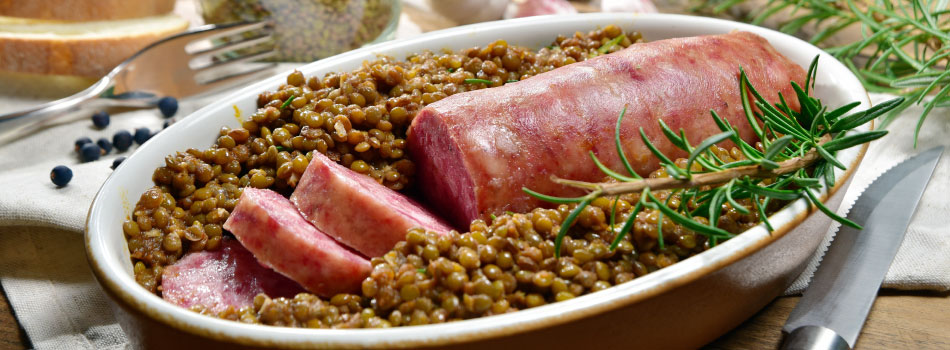
Pork is considered very lucky in Italy. That is why the traditional New Year dinner is zampone e lenticchie, or pig’s trotter and lentils. Italian folklore suggests that eating sausage before midnight is a good omen for the New Year, as the fatty and rich qualities of pork symbolize prosperity in the days to come. Lentils are also believed to bring good luck and prosperity, so when eaten alongside pork it is a meal that has a lot of promise for the new year!
Visiting Italy? Make sure to use this greeting on January 1st: Buon Anno!
Germany
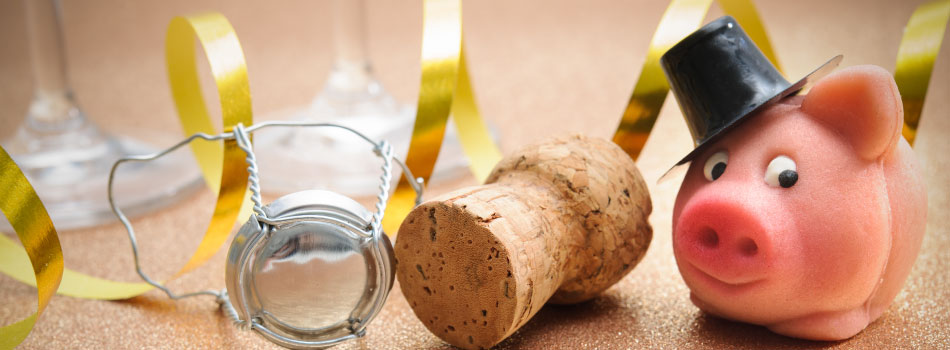
Germany has many New Year’s traditions! Sauerkraut, a popular fermented cabbage, is considered to be a lucky food in some parts of Germany, as it will bring blessings and wealth for the new year. Marzipanschwinchen, small pigs sculpted out of marzipan, are often made and given out as gifts because pigs are considered lucky. Germans also have a strict rule of no poultry on New Year’s, as they believe it is bad luck. One of the more nerve-wracking traditions is the Pfannkuchen. Typically, these donuts are filled with jam or liquor. But beware! As a practical joke, some donuts are given a different filling, such as mustard. If you eat one of the joke donuts, it is seen as bad luck!
Visiting Germany? Make sure to use this greeting on January 1st: Frohes Neues Jahr!
The Philippines

Colorful salads are a great way to ring in the New Year in the Philippines, as it signifies a livelier and more colorful life for the year to come. Some salads include fruit salad, vegetable salad, chicken macaroni salad, or buko salad which is a sweet dessert dish made with shredded young coconut. The more colorful the salad, the better the year!
Visiting the Philippines? Make sure to use this greeting on January 1st: Maligayang Bagong Taon!
Japan
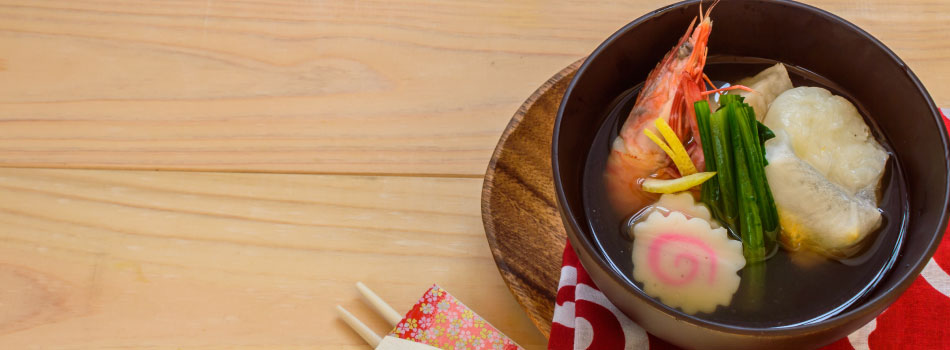
Ozoni is a very traditional Japanese breakfast eaten on New Year’s Day. It is a soup filled with mochi and various vegetables such as carrots, daikon radish, mushrooms, and more. It can be made with chicken stock or white miso and may contain fish. Preparations differ greatly depending on where you are in Japan. It is considered lucky because, in the old days, people were mostly farmers and prepared offerings to Gods or Deities on New Year’s Day to show appreciation for the good harvest. After the offering ceremony, people then used these ingredients to make ozoni. Rice was scarce then, so mochi, a Japanese rice cake, was only made on New Year’s, as all of the family would gather to pound the mochi together. Cutting the mochi into pieces is a symbol of sharing in happiness and luxury with your loved ones.
Visiting Japan? Make sure to use this greeting on January 1st: 明けましておめでとうございます!
The United States
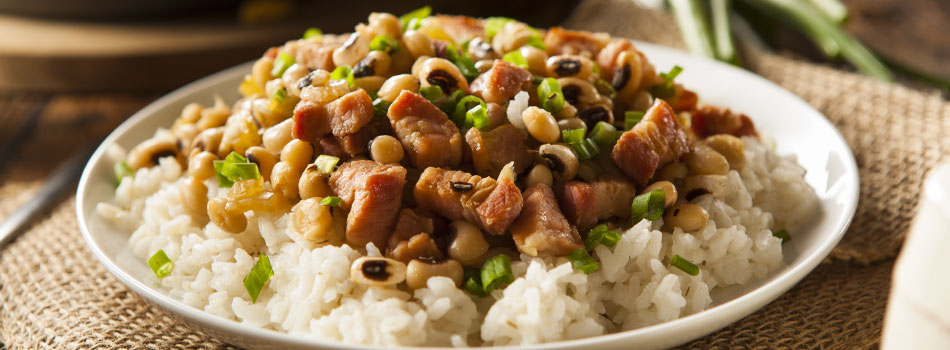
Hoppin’ John is a wildly popular New Year’s dish in the southern United States. This meal is typically composed of black-eyed peas, rice, pork, and onions. It is commonly eaten on New Year’s Eve as it is thought to bring a prosperous year filled with luck. Peas or beans symbolize wealth, as they resemble coins. Pork is a sign of prosperity. Leafy green vegetables are served alongside Hoppin’ John, which are supposed to bring wealth to the new year due to their similarities to money. Cornbread, a common pairing with black-eyed peas and greens, symbolizes gold and adds yet another symbol of wealth to the dinner. If you’re looking for a wealthy year, this is the dish for you!
Happy New Year!
Other Fun Traditions and New Year’s History
Did you know that the practice of setting New Year’s resolutions is said to have begun as early as 2600 B.C.? The Babylonians used them as a way to reflect on the past and plan ahead.
Most foods that are considered to bring good luck stem back to when the particular food was scarce or rare. Since the availability of the item was low, making it hard to find, they became luxury items. This is why foods that are so commonly found today, such as rice or sweets, are still considered lucky even though they are no longer rare.
Eating any ring-shaped treat, such as a donut, symbolizes “coming full circle” in many countries, and thus is a mark of good fortune for the new year.
Are you starting a new tradition with your family this year, or expanding on long-standing traditions that have been passed down for generations? Either way, swing by your local Market Basket to pick up all of the ingredients you need to build a meal fit for the lucky 2018!
Wishing you and your loved ones a safe, happy, and healthy New Year!